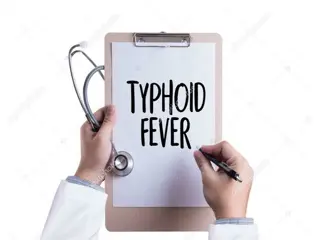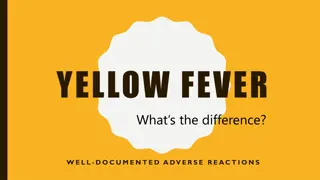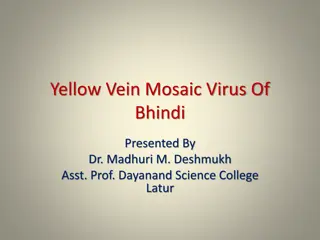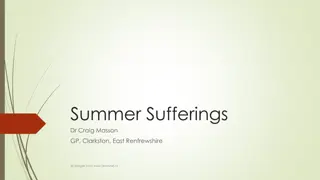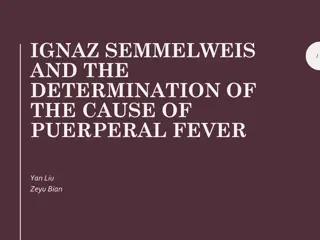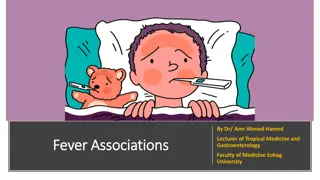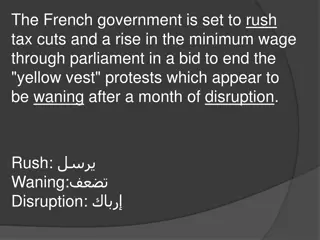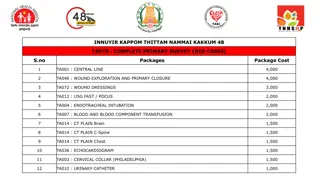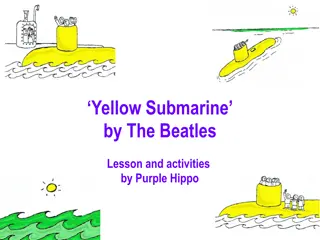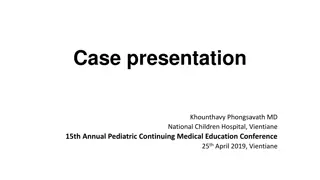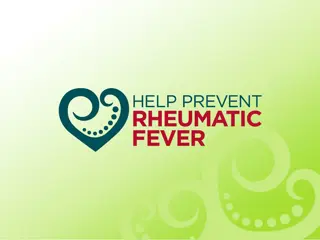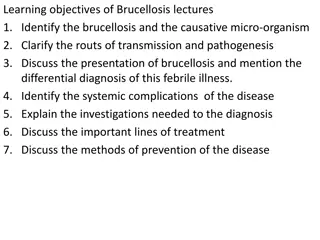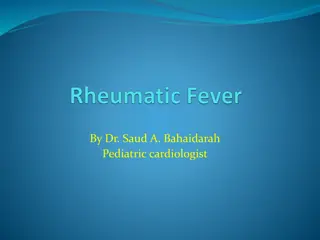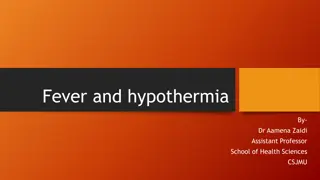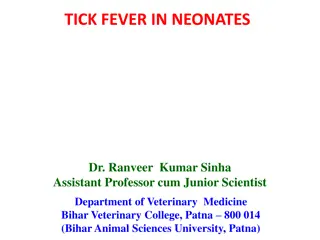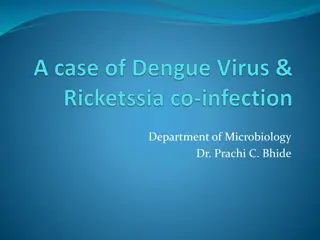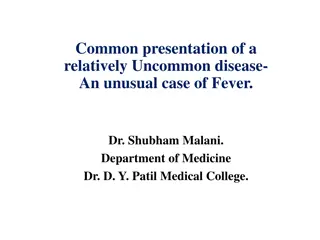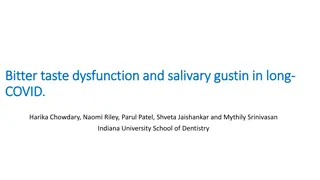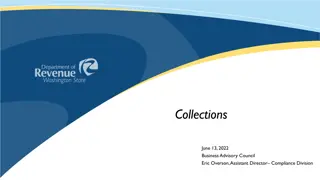Challenges in Continuing Yellow Fever Activities Amid COVID-19
Challenges persist in sustaining yellow fever activities during the COVID-19 pandemic, with decreased surveillance, delayed outbreak responses, and logistical disruptions impacting efforts to eliminate yellow fever epidemics. The EYE partnership focuses on protecting at-risk populations, preventing international spread, and rapidly controlling outbreaks. COVID-19 has heightened the risk of yellow fever outbreaks, affecting surveillance, immunization activities, and operational logistics. Despite these challenges, efforts continue to deliver yellow fever activities amidst the ongoing pandemic, aiming to eliminate yellow fever epidemics.
Download Presentation

Please find below an Image/Link to download the presentation.
The content on the website is provided AS IS for your information and personal use only. It may not be sold, licensed, or shared on other websites without obtaining consent from the author. Download presentation by click this link. If you encounter any issues during the download, it is possible that the publisher has removed the file from their server.
E N D
Presentation Transcript
Challenges around continuation of yellow fever activities in COVID-19 context COVID-19 Immunization Partners Call 14 April 2021 Laurence Cibrelus, MD, MPH EYE Secretariat lead, High Impact Epidemics, WHO Health Emergencies Programme
A continuing threat to global health security High-impact disease endemic in 3 regions (AFRO, EMRO, PAHO) but risk of spread and extension exists Wildlife reservoir that cannot be controlled At the crossroads of epidemic-prone, vaccine-preventable and vector-borne diseases Sustained risk mitigation efforts needed YF urban outbreaks are dramatic events The EYE partnership aims to Protect at-risk populations (vaccination, risk prioritization) Prevent international spread (urban readiness, at-risk workers, IHR) Control outbreaks rapidly (surveillance, Dx, international samples transport, emergency vaccines, immediate response) 2 ELIMINATE YELLOW FEVER EPIDEMICS
COVID-19 increased YF risk on short and long terms and reduced capacity to detect and confirm YF events early Delayed outbreak response Ethiopia - Uganda - South Sudan Decreased surveillance 67% reduction in number of samples received by national labs compared to same period last year Operations/Logistics affected by lack of transport routes and rising costs (e.g. tripling of shipping costs in certain contexts). Delayed or disrupted preventive immunization activities RI disruptions (no quantifiable data available yet, but modelling in progress) Initial pulse survey clearly indicates disruptions, hesitancy of caregivers to access immunization services, safety concerns by HCWs, e.g. Brazil has maintained YF RI in affected areas but uncertainty persists on community readiness to receive those services. Programmatic, epidemic, resources and partnership risks identified, assessed and monitored including delays to EYE implementation due to shifting priorities and complexity of virtual working environments Opportunities Integration of YF into COVID surveillance efforts, Grouping of samples from different pathogens Need to quantify impact on accumulation of susceptibles 3 ELIMINATE YELLOW FEVER EPIDEMICS
Continued delivery of YF activities during COVID despiste challenges From mitigating the impact of COVID per se (2020) to mitigating the COVID vaccine roll-out (2021) Priorities were to: Ensure continuation of essential services to prevent or control outbreaks Prepare for post acute COVID times and log term implementation of preventive activities About 45 million people protected against YF for life by mass vaccination campaigns in Nigeria and Ghana. An additional 2.4 million people protected by outbreak responses in Ethiopia, South Sudan and Uganda. Over 140 million people protected against YF since inception of the EYE strategy via large-scale vaccination. Although 2020 achieved 60% of initial target (DRC campaigns postponed to 2021), twice as much people protected in 2020 compared to 2019. 4 ELIMINATE YELLOW FEVER EPIDEMICS
Key tools to mitigate COVID-19 impact A well-functioning partnership Leveraging existing structures and platforms Rapid situational awareness toward solutions Engagement with other programmes to seek efficiencies and integration Re-orient priorities to meet countries needs Empower countries to investigate and manage YF (e.g., ICG request package; PCCS methods for reactive context) Support countries to leverage COVID-19 surveillance efforts to enhance YF surveillance in high-risk areas Risk register to guide and monitor our mitigation strategy Calls to action to fulfill commitments, respond to countries needs and continue to provide essential services Prepare for post-COVID 5 ELIMINATE YELLOW FEVER EPIDEMICS
> 140 million people protected via yellow fever (YF) mass vaccination since EYE strategy inception with >53 million additional planned in 2021 Status Country Activity & scope Target population context FCV Issue Comment Sudan Catch-up unprotected children & introduce YF vacc. into routine immunization 5.6 million catch-up + 1.5 million (yearly) Yes Central level resources stretched due to COVID-19 vaccine roll-out. Activity dates pending for RI introduction & remaining catch-up. 5- dose vials arrival expected June. Sudan Phase 2 Catch-up (Sennar, Gedarif, Red Sea) & targeted Ethiopian refugees ~550,000 Yes Central level resources stretched due to COVID-19 vaccine roll-out. Kassala & Gedarif activities completed catch-up (YFV + IPV) + refugees outreach (YF + OCV). Red Sea pending. Rep. of Congo Single phase preventive mass vaccination campaign 4 million NA Campaign at risk of delay. Multi-partner coordination calls not yet endorsed, COVID- 19 vaccine roll-out impacting. Standard is to initiate country calls 6 m prior to campaign, pending as of 14 April 2021. Nigeria Phase of nationwide, multi-year preventive mass campaigns 26.2 million Yes, Borno &NE Central level resources stretched due to COVID-19 vaccine roll-out, with coordination call postponed. Many non-polio campaigns compacted in Q3/4, gap in country-calls X >1 month. Original start date was March 2021 (decision letter in March) Uganda Introduction of YF vaccine into routine immunization 1.6 million (yearly) Refugee Support to RI introduction in RO workplan but not yet initiated. Standard is to initiate 6m prior to new vaccine introduction. Decision letter pending. DRC First phases of nation-wide multi-year preventive mass campaigns 18.4 million Yes Risk of delays secondary to country context. Phase 1 &2 PMVC delayed >1yr to April May, Equateur delay until July Newly added 300,000 refugees on 12 March 2021 . Ongoing logistics challenges. 6 ELIMINATE YELLOW FEVER EPIDEMICS KEY: On-track At-Risk / support gaps Delays
YF resurgence in West Africa countries with Hx of preventive campaigns 7 ELIMINATE YELLOW FEVER EPIDEMICS
Quantifying the number of susceptibles in YF high-risk countries Based on preliminary analysis, an estimated 1 in 10 eligible infants may have missed YF vaccination in 2020 secondary to COVID-19 disruption in Africa More detailed analysis for all YF high risk countries will better quantify COVID-19 impact Exploring options and concrete implications (feasibility; timeframe; RACI) 1. Scenario development by triangulating data based on 2020 JRF and WUENIC 2. Updating models of population immunity 3. Analysis using in-country DHIS2 (admin) coverages, similar to Nigeria All options have trade-offs 8 ELIMINATE YELLOW FEVER EPIDEMICS
Thank you cibrelusl@who.int ; eye.strategy@who.int For further information https://www.who.int/initiatives/eye-strategy


